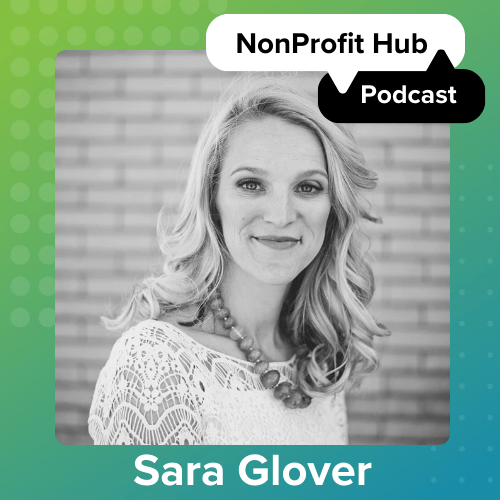If we ran our lives like we run our NPOs, many of us would be in huge trouble.
Don’t believe me? Let’s apply nonprofit-logic to some day-to-day life choices:
1. Don’t go to college if it’s not 100% covered by scholarships! That’s costly overhead! Where are the short term rewards? Especially with that liberal arts degree…
…Despite the fact that you could gain valuable experience, confidence and the connections that make getting jobs and work experience much easier—and there’s a boat of evidence a college degree is correlated with an increase in your total lifetime earnings. Some risk, of course – but a good investment for many.
Here’s another…
2. Don’t buy that expensive camera you’ve been eyeing! You don’t have that kind of money. You’ll have to put it on the card. You’ll never pay it down.
…Even if you can use that camera to start an awesome photography business on the side and through that create a permanent, life-long supplemental income (which will pay off for your camera costs within six months). Hmm.
One more:
3. Stop taking full 60 minute lunch breaks at work! Your coworkers might think you’re a slacker. Your boss definitely will. Don’t you care about the mission?
…Even though there’s plenty of research indicating that taking more breaks increases your energy and productivity at work, so you can get MORE work done, not less.
In all of the above cases, what looks like a risky, costly endeavor often turns out to be a pretty conservative, big-reward investment when viewed over the long haul. While none of these are easy shortcuts (e.g., getting a college degree is hard work!), each are predictable good investments in yourself if you are smart about them.
In other words, sometimes the best thing you can do is invest in yourself.
Do we practice the same philosophy in our nonprofits?
Investing in Your Nonprofit (and Your People)
Your nonprofit exists to help the world. You want every possible dollar you get to help fulfill your mission.
I get that. But sometimes the best way to change the world is to invest in making our organizations work better, faster and smarter.
Investing in your organization means getting more money over the long term, at an initial cost. For example – it might cost a nonprofit $50,000 to hire a major donor fundraiser. But if that fundraiser brings $500,000 of gifts to your organization over a year, you’ll be able to create a much bigger impact than you could have with your initial investment (about 900% bigger!).
This is the difference I’ve talked about between being a frugal nonprofit or a cheap one. A frugal nonprofit is happy to spend on “overhead” that actually will increase the bottom line in the future and make their work more efficient, instead of avoiding costs for the sake of appearing fiscally prudent.
But how can you identify a good investment vs. an extravagant expense?
Good question!
A great investment improves something that you will use regularly.
A bad one improves one you use rarely.
For instance, if you buy yourself a high-end kitchen appliance that will save you five minutes of work making meals if you’re a restaurant chef, that’s a good investment. As a career chef, you’ll use that appliance every day, multiple times, saving you HUGE amounts of labor and money over time.
But if you’ll only use that same appliance twice a year (max) in your home, it’s an extravagant expense. Better to borrow it from a friend or take the time to do things manually. If frugality matters to you, it’s really not worth the extra cost.
So investing in your nonprofit’s work is really just taking the time to think creatively about how you can make regular, key parts of your organization more efficient.
Adopting an Attitude of Abundance
This year, instead of a gut-reaction of scarcity, I’d love if our sector adopted an attitude of abundance.
The truth is that more often than not, our organizations try to do too much, and spread our limited resources around on too many things, instead of investing extravagantly on the most IMPORTANT parts of our organizations (the parts that actually grow the pie and create more wealth and opportunities from our work).
The best investments for your organization will be different from anyone else’s. There’s no cheat sheet for this.
But there are patterns – and I’d love to give you some ideas to get started investing in your organization to expand your impact.
10 Ideas for Investing in Your Organization Today
1. Invest in Your People
Your biggest asset is your people. If a good thing to spend money on is something you depend upon every day, what’s bigger than the people that make up your organization?
Why does Google spend billions on recruiting and employee benefits? Believe us, it’s not altruism. It’s because having good people (and then making their work fulfilling) is a huge competitive advantage. People are what keep your organization running, every day.
In other words, the employees, board members and volunteers that make up your organization should always be a first priority in your organization when it comes to spending money. Develop a healthy nonprofit culture that invests extravagantly in your own people.
2. Education and Self-Development
Go to an AFP conference or a local nonprofit educational event. Purchase online training for your nonprofit staff. Have an afternoon to train your board in fundraising and outreach. Buy books to create an office library, and set aside reading hours for everyone to learn to do their jobs even better.
3. Reject Martyrdom and Self-Sacrifice
Take long lunch breaks as a team. Work shorter hours, but work more efficiently and smarter. Reject the attitude of self-sacrifice and martyrdom that limits so many of our best nonprofit organizations and burns out our employees and board members.
4. Start a Nonprofit Blog
Starting your nonprofit blog means beginning a journey that will help you enormously long term, but it takes a ton of work to begin and maintain initially, even for the first few months. But after a while, you see the enormous long term benefits, that only GROW over time.
5. Upgrade a Technology You Use Every Day (or Multiple Times a Week)
Don’t work on old computers that break down or can’t run key programs. If you use something every day (or it’s high value like your website), look into doing it right, not JUST cheaply.
6. Get a Great Donor Database
This is perhaps the #1 technological investment that could improve our nonprofit’s day-to-day operations. How many of us use duct-taped excel documents across multiple computers to keep track of our donor relationships? Trust us, a good donor database pays for itself, in reduced headaches and increased donor cultivation. (Need a recommendation? For its simplicity and its focus on donor retention, our sponsor’s partner Bloomerang is hard to beat.)
7. Give Raises and Hire at Market-Rate Salaries (or Above)
Invest in your staff financially.
8. Give More Autonomy
Being more in control of your work often gives more satisfaction than being paid more for it (Daniel Pink wrote a great book on the subject – maybe you should “invest” in purchasing it?). You might not be able to raise salaries, but you can probably give your employees greater autonomy and sense of importance, which can go even further.
9. Increase Your (Smart) Marketing Budget
Unfortunately, when under financial stress, many of us cut back on the programs that we need most, like marketing, direct mail and fundraising. These revenue-producing programs are the most important to invest MORE in when economic times are tough. Of course, invest in the marketing and fundraising that helps develop long term funding – such as adding fundraising staff, building donor relationships and thanking your donors.
10. Stop Investing in Short Term ROI
Starting a new program to try to nab a grant? Throwing three events this year instead of one? Going to build a mobile-exclusive app that will need to be updated throughout the year and doesn’t add any value beyond what your website already does?
Make a resolution to stop doing one thing this year — and instead, invest that time, money or energy where it’s most needed. Hint: It might best serve an EXISTING program that’s effective but needs more money – or just back into your biggest asset, your people.
Thanks for reading! What will your organization invest in this year? What do you only WISH your organization would invest in?






